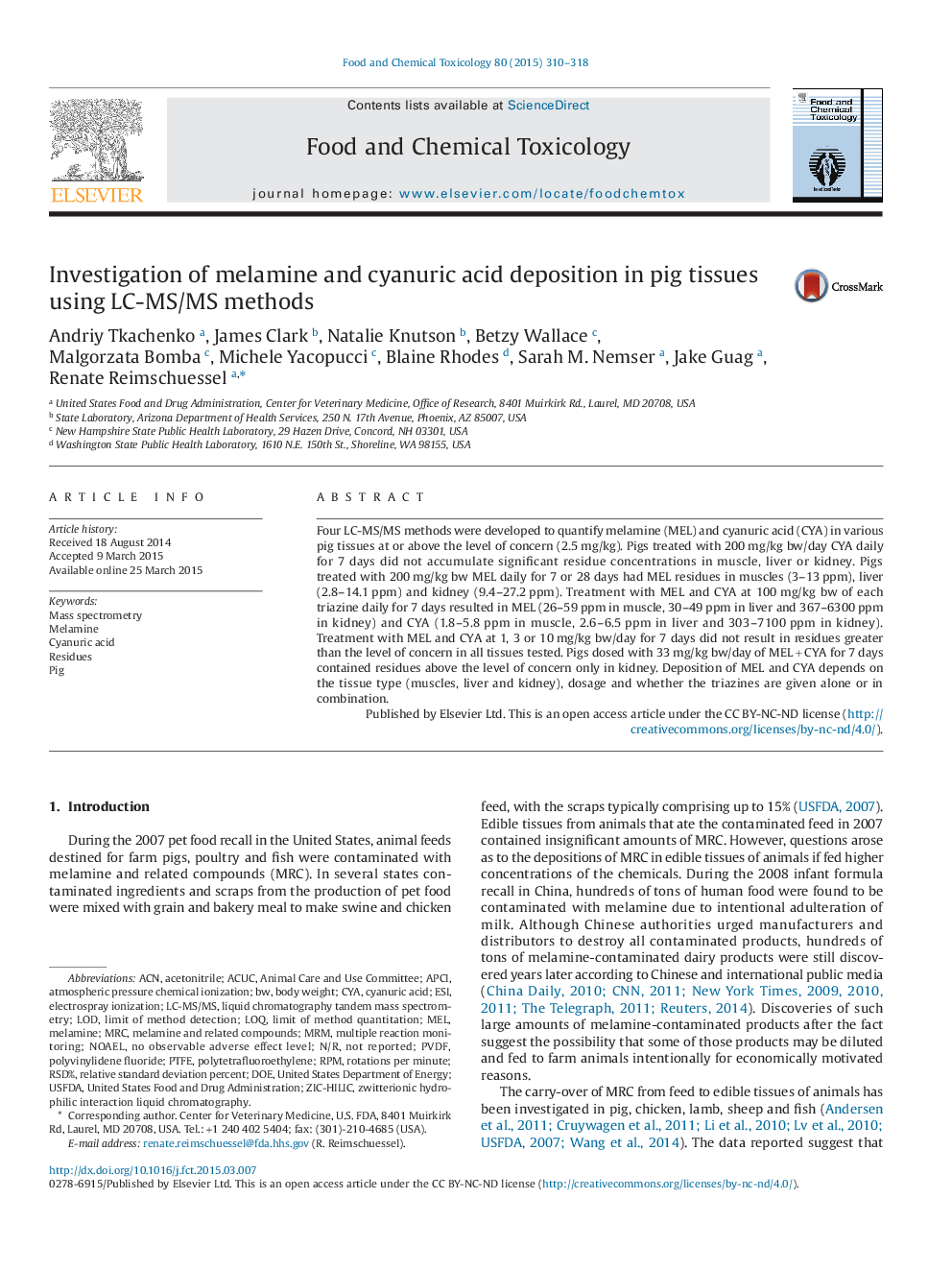| Article ID | Journal | Published Year | Pages | File Type |
|---|---|---|---|---|
| 5849837 | Food and Chemical Toxicology | 2015 | 9 Pages |
Abstract
Four LC-MS/MS methods were developed to quantify melamine (MEL) and cyanuric acid (CYA) in various pig tissues at or above the level of concern (2.5âmg/kg). Pigs treated with 200âmg/kg bw/day CYA daily for 7 days did not accumulate significant residue concentrations in muscle, liver or kidney. Pigs treated with 200âmg/kg bw MEL daily for 7 or 28 days had MEL residues in muscles (3-13âppm), liver (2.8-14.1âppm) and kidney (9.4-27.2âppm). Treatment with MEL and CYA at 100âmg/kg bw of each triazine daily for 7 days resulted in MEL (26-59âppm in muscle, 30-49âppm in liver and 367-6300âppm in kidney) and CYA (1.8-5.8âppm in muscle, 2.6-6.5âppm in liver and 303-7100âppm in kidney). Treatment with MEL and CYA at 1, 3 or 10âmg/kg bw/day for 7 days did not result in residues greater than the level of concern in all tissues tested. Pigs dosed with 33âmg/kg bw/day of MELâ+âCYA for 7 days contained residues above the level of concern only in kidney. Deposition of MEL and CYA depends on the tissue type (muscles, liver and kidney), dosage and whether the triazines are given alone or in combination.
Keywords
NOAELUSFDAACNMRMMRCMELRPMAPCIPVDFZIC-HILICLOQCyADOEPTFERSD%ESILC-MS/MSUnited States Food and Drug AdministrationAcetonitrilecyanuric acidResiduesLOD یا Limit of detectionPigMass spectrometryMelaminemultiple reaction monitoringno observable adverse effect levelUnited States Department of Energybody weightpolytetrafluoroethylenePolyvinylidene fluoriderotations per minuteliquid chromatography tandem mass spectrometrynot reportedelectrospray ionizationatmospheric pressure chemical ionization
Related Topics
Life Sciences
Agricultural and Biological Sciences
Food Science
Authors
Andriy Tkachenko, James Clark, Natalie Knutson, Betzy Wallace, Malgorzata Bomba, Michele Yacopucci, Blaine Rhodes, Sarah M. Nemser, Jake Guag, Renate Reimschuessel,
